Enhancing Modern Distribution System Resilience: A Comprehensive Two-Stage Approach for Mitigating Climate Change Impact
Abstract
Highlights
- A two-stage stochastic MILP framework is proposed, integrating distributed energy resources (DERs), microgrids, and remotely controlled switches to optimize real-time operation and enhance resilience in distribution systems.
- The first stage focuses on economic day-ahead scheduling of DERs, load management, and network reconfiguration based on real-time market data. The second stage re-optimizes operations under specific disruption scenarios, leveraging DER dispatch, microgrid formation, and prioritized load shedding to maximize system resilience.
- The proposed method allows distribution system operators (DSOs) to account for uncertainties in renewable generation, market prices, and component vulnerabilities, resulting in reduced load curtailment, improved voltage stability, and faster post-event recovery during extreme weather conditions.
- This framework contributes to developing smart, climate-resilient urban infrastructure by supporting the coordinated operation of decentralized energy resources and enabling adaptive, cost-effective grid management under stress conditions.
Abstract
1. Introduction
1.1. Literature Review
1.2. Contribution
- Utilizing the maximum generation potential of renewable and dispatchable DERs involving independent power producers through topology change.
- Proposing a general vulnerability model for network components and considering a priority for load shedding after an extreme weather event.
- Proposing a general model and metrics that can be used for various types of natural disasters.
- 1.
- Stage 1 (Economic Scheduling):
- The day-ahead scheduling of DERs, network reconfiguration with remotely controlled switches, and energy exchange with an upstream network based on real-time market price.
- Objective: Minimizing operational costs under normal conditions, considering uncertainties.
- 2.
- Stage 2 (Resilience Enhancement):
- Re-optimizes system operation under HILP event scenarios, considering actual disruptions (e.g., damaged lines, outages).
- Objective: maximizing resilience with network reconfiguration to minimize load curtailment and accelerate recovery, including DER redispatch, microgrid formation, and load prioritization.
2. Resilience Assessment Framework
2.1. Quantification of Resilience Concept
2.2. The Mathematical Formulation of the Problem
2.2.1. Components Vulnerability
2.2.2. Load Priority
2.2.3. An Overview of the Proposed Resilience-Oriented Framework
3. Numerical Simulations
3.1. Assumptions and Case Studies
- Time of occurrence.
- Intensity level.
- Duration.
3.2. Numerical Results and Discussion
- Case I: the optimal resiliency-economic scheduling of the islanded network for an approaching HILP weather event, when independent DERs do not participate during the scheduling horizon.
- Case II: the optimal resiliency-economic scheduling of the islanded network for an approaching HILP weather event considering load prioritizing, when all resources participate during the scheduling horizon.
- Case II with priority has the lowest load loss and restoration time, representing the effective combination of DER and optimal switch operation; in contrast, scenario case I, which lacks proactive scheduling, results in the maximum resilience degradation.
- The solutions of the Pareto front offer the best trade-off between cost and resilience gain based on the DSO priorities in operating the network.
- The scheduling of different ownerships of DERs reduces restoration delays compared to the base case.
- Prioritized load restoration is successfully implemented
4. Conclusions
Author Contributions
Funding
Informed Consent Statement
Data Availability Statement
Acknowledgments
Conflicts of Interest
References
- Daeli, A.; Mohagheghi, S. Power Grid Infrastructural Resilience against Extreme Events. Energies 2022, 16, 64. [Google Scholar] [CrossRef]
- Wang, C.; Ju, P.; Wu, F.; Pan, X.; Wang, Z. A systematic review on power system resilience from the perspective of generation, network, and load. Renew. Sustain. Energy Rev. 2022, 167, 112567. [Google Scholar] [CrossRef]
- Younesi, A.; Shayeghi, H.; Siano, P.; Safari, A. A multi-objective resilience-economic stochastic scheduling method for microgrid. Int. J. Electr. Power Energy Syst. 2021, 131, 106974. [Google Scholar] [CrossRef]
- Galvan, E.; Mandal, P.; Sang, Y. Networked microgrids with roof-top solar PV and battery energy storage to improve distribution grids resilience to natural disasters. Int. J. Electr. Power Energy Syst. 2020, 123, 106239. [Google Scholar] [CrossRef]
- Zhu, J.; Yuan, Y.; Wang, W. An exact microgrid formation model for load restoration in resilient distribution system. Int. J. Electr. Power Energy Syst. 2020, 116, 105568. [Google Scholar] [CrossRef]
- Zare-Bahramabadi, M.; Abbaspour, A.; Fotuhi-Firuzabad, M.; Moeini-Aghtaie, M. Resilience-based framework for switch placement problem in power distribution systems. IET Gener. Transm. Distrib. 2018, 12, 1223–1230. [Google Scholar] [CrossRef]
- Oboudi, M.H.; Mohammadi, M.; Rastegar, M. Resilience-oriented intentional islanding of reconfigurable distribution power systems. J. Mod. Power Syst. Clean Energy 2019, 7, 741–752. [Google Scholar] [CrossRef]
- Lei, S.; Chen, C.; Li, Y.; Hou, Y. Resilient Disaster Recovery Logistics of Distribution Systems: Co-Optimize Service Restoration With Repair Crew and Mobile Power Source Dispatch. IEEE Trans. Smart Grid 2019, 10, 6187–6202. [Google Scholar] [CrossRef]
- Wang, Y.; Rousis, A.O.; Strbac, G. Resilience-driven optimal sizing and pre-positioning of mobile energy storage systems in decentralized networked microgrids. Appl. Energy 2022, 305, 117921. [Google Scholar] [CrossRef]
- Sedgh, S.A.; Doostizadeh, M.; Aminifar, F.; Shahidehpour, M. Resilient-enhancing critical load restoration using mobile power sources with incomplete information. Sustain. Energy Grids Netw. 2021, 26, 100418. [Google Scholar] [CrossRef]
- Amraee, T.; Saberi, H. Controlled islanding using transmission switching and load shedding for enhancing power grid resilience. Int. J. Electr. Power Energy Syst. 2017, 91, 135–143. [Google Scholar] [CrossRef]
- Ashrafi, R.; Amirahmadi, M.; Tolou-Askari, M.; Ghods, V. Multi-objective resilience enhancement program in smart grids during extreme weather conditions. Int. J. Electr. Power Energy Syst. 2021, 129, 106824. [Google Scholar] [CrossRef]
- Vugrin, E.; Castillo, A.; Silva-Monroy, C. Resilience Metrics for the Electric Power System: A Performance-Based Approach; Sandia National Lab.: Albuquerque, NM, USA, 2017. [Google Scholar] [CrossRef]
- Amirioun, M.; Aminifar, F.; Lesani, H.; Shahidehpour, M. Metrics and quantitative framework for assessing microgrid resilience against windstorms. Int. J. Electr. Power Energy Syst. 2019, 104, 716–723. [Google Scholar] [CrossRef]
- Bhusal, N.; Abdelmalak, M.; Kamruzzaman, M.; Benidris, M. Power System Resilience: Current Practices, Challenges, and Future Directions. IEEE Access 2020, 8, 18064–18086. [Google Scholar] [CrossRef]
- Mohammadian, M.; Aminifar, F.; Amjady, N.; Shahidehpour, M. Data-Driven Classifier for Extreme Outage Prediction Based on Bayes Decision Theory. IEEE Trans. Power Syst. 2021, 36, 4906–4914. [Google Scholar] [CrossRef]
- Sedzro, K.S.A.; Shi, X.; Lamadrid, A.J.; Zuluaga, L.F. A Heuristic Approach to the Post-Disturbance and Stochastic Pre-Disturbance Microgrid Formation Problem. IEEE Trans. Smart Grid 2019, 10, 5574–5586. [Google Scholar] [CrossRef]
- Li, Z.; Shahidehpour, M.; Aminifar, F.; Alabdulwahab, A.; Al-Turki, Y. Networked Microgrids for Enhancing the Power System Resilience. Proc. IEEE 2017, 105, 1289–1310. [Google Scholar] [CrossRef]
- Liang, K.; Wang, H.; Pozo, D.; Terzija, V. Power system restoration with large renewable Penetration: State-of-the-Art and future trends. Int. J. Electr. Power Energy Syst. 2024, 155, 109494. [Google Scholar] [CrossRef]
- Yang, L.; Teh, J. Review on vulnerability analysis of power distribution network. Electr. Power Syst. Res. 2023, 224, 109741. [Google Scholar] [CrossRef]
- Serrano-Fontova, A.; Li, H.; Liao, Z.; Jamieson, M.R.; Serrano, R.; Parisio, A.; Panteli, M. A comprehensive review and comparison of the fragility curves used for resilience assessments in power systems. IEEE Access 2023, 11, 108050–108067. [Google Scholar] [CrossRef]
- Dwivedi, D.; Mitikiri, S.B.; Babu, K.V.S.M.; Yemula, P.K.; Srinivas, V.L.; Chakraborty, P.; Pal, M. Technological advancements and innovations in enhancing resilience of electrical distribution systems. Int. J. Crit. Infrastruct. Prot. 2024, 46, 100696. [Google Scholar] [CrossRef]
- Younesi, A.; Shayeghi, H.; Wang, Z.; Siano, P.; Mehrizi-Sani, A.; Safari, A. Trends in modern power systems resilience: State-of-the-art review. Renew. Sustain. Energy Rev. 2022, 162, 112397. [Google Scholar] [CrossRef]
- Shi, Q.; Liu, W.; Zeng, B.; Hui, H.; Li, F. Enhancing distribution system resilience against extreme weather events: Concept review, algorithm summary, and future vision. Int. J. Electr. Power Energy Syst. 2022, 138, 107860. [Google Scholar] [CrossRef]
- Hamidieh, M.; Ghassemi, M. Microgrids and Resilience: A Review. IEEE Access 2022, 10, 106059–106080. [Google Scholar] [CrossRef]
- Baghbanzadeh, D.; Salehi, J.; Gazijahani, F.S.; Shafie-khah, M.; Catalão, J.P. Resilience improvement of multi-microgrid distribution networks using distributed generation. Sustain. Energy Grids Netw. 2021, 27, 100503. [Google Scholar] [CrossRef]
- Shi, Q.; Li, F.; Olama, M.; Dong, J.; Xue, Y.; Starke, M.; Feng, W.; Winstead, C.; Kuruganti, T. Post-extreme-event restoration using linear topological constraints and DER scheduling to enhance distribution system resilience. Int. J. Electr. Power Energy Syst. 2021, 131, 107029. [Google Scholar] [CrossRef]
- Xu, J.; Zhang, T.; Du, Y.; Zhang, W.; Yang, T.; Qiu, J. Islanding and dynamic reconfiguration for resilience enhancement of active distribution systems. Electr. Power Syst. Res. 2020, 189, 106749. [Google Scholar] [CrossRef]
- Farzin, H.; Fotuhi-Firuzabad, M.; Moeini-Aghtaie, M. Enhancing Power System Resilience Through Hierarchical Outage Management in Multi-Microgrids. IEEE Trans. Smart Grid 2016, 7, 2869–2879. [Google Scholar] [CrossRef]
- Kim, J.; Dvorkin, Y. Enhancing Distribution System Resilience with Mobile Energy Storage and Microgrids. IEEE Trans. Smart Grid 2019, 10, 4996–5006. [Google Scholar] [CrossRef]
- Mousavizadeh, S.; Haghifam, M.R.; Shariatkhah, M.H. A linear two-stage method for resiliency analysis in distribution systems considering renewable energy and demand response resources. Appl. Energy 2018, 211, 443–460. [Google Scholar] [CrossRef]
- Zhang, G.; Zhang, F.; Zhang, X.; Wu, Q.; Meng, K. A multi-disaster-scenario distributionally robust planning model for enhancing the resilience of distribution systems. Int. J. Electr. Power Energy Syst. 2020, 122, 106161. [Google Scholar] [CrossRef]
- Wang, X.; Li, Z.; Shahidehpour, M.; Jiang, C. Robust Line Hardening Strategies for Improving the Resilience of Distribution Systems with Variable Renewable Resources. IEEE Trans. Sustain. Energy 2019, 10, 386–395. [Google Scholar] [CrossRef]
- Behzadi, S.; Bagheri, A.; Rabiee, A. Resilience-Oriented Operation of Micro-Grids in both Grid-Connected and Isolated Conditions within Sustainable Active Distribution Networks. J. Oper. Autom. Power Eng. 2024, 13, 38–51. [Google Scholar] [CrossRef]
- Ma, S.; Su, L.; Wang, Z.; Qiu, F.; Guo, G. Resilience Enhancement of Distribution Grids Against Extreme Weather Events. IEEE Trans. Power Syst. 2018, 33, 4842–4853. [Google Scholar] [CrossRef]
- Ghasemi, M.; Kazemi, A.; Bompard, E.; Aminifar, F. A two-stage resilience improvement planning for power distribution systems against hurricanes. Int. J. Electr. Power Energy Syst. 2021, 132, 107214. [Google Scholar] [CrossRef]
- Najafi, J.; Peiravi, A.; Anvari-Moghaddam, A. Enhancing Integrated Power and Water Distribution Networks Seismic Resilience Leveraging Microgrids. Sustainability 2020, 12, 2167. [Google Scholar] [CrossRef]
- Lin, Y.; Bie, Z. Tri-level optimal hardening plan for a resilient distribution system considering reconfiguration and DG islanding. Appl. Energy 2018, 210, 1266–1279. [Google Scholar] [CrossRef]
- Salimi, M.; Nasr, M.A.; Hosseinian, S.H.; Gharehpetian, G.B.; Shahidehpour, M. Information Gap Decision Theory-Based Active Distribution System Planning for Resilience Enhancement. IEEE Trans. Smart Grid 2020, 11, 4390–4402. [Google Scholar] [CrossRef]
- Shi, Q.; Li, F.; Kuruganti, T.; Olama, M.M.; Dong, J.; Wang, X.; Winstead, C. Resilience-Oriented DG Siting and Sizing Considering Stochastic Scenario Reduction. IEEE Trans. Power Syst. 2021, 36, 3715–3727. [Google Scholar] [CrossRef]
- Ma, S.; Li, S.; Wang, Z.; Qiu, F. Resilience-Oriented Design of Distribution Systems. IEEE Trans. Power Syst. 2019, 34, 2880–2891. [Google Scholar] [CrossRef]
- Ghasemi, M.; Kazemi, A.; Gilani, M.A.; Shafie-Khah, M. A Stochastic Planning Model for Improving Resilience of Distribution System Considering Master-Slave Distributed Generators and Network Reconfiguration. IEEE Access 2021, 9, 78859–78872. [Google Scholar] [CrossRef]
- Ebadat-Parast, M.; Nazari, M.H.; Hosseinian, S.H. Distribution system resilience enhancement through resilience-oriented optimal scheduling of multi-microgrids considering normal and emergency conditions interlink utilizing multi-objective programming. Sustain. Cities Soc. 2022, 76, 103467. [Google Scholar] [CrossRef]
- Farzin, H.; Fotuhi-Firuzabad, M.; Moeini-Aghtaie, M. A Stochastic Multi-Objective Framework for Optimal Scheduling of Energy Storage Systems in Microgrids. IEEE Trans. Smart Grid 2017, 8, 117–127. [Google Scholar] [CrossRef]
- Wang, Y.; Rousis, A.O.; Strbac, G. Resilience-Driven Modeling, Operation and Assessment for a Hybrid AC/DC Microgrid. IEEE Access 2020, 8, 139756–139770. [Google Scholar] [CrossRef]
- Mohiti, M.; Monsef, H.; Anvari-Moghaddam, A.; Lesani, H. Two-Stage Robust Optimization for Resilient Operation of Microgrids Considering Hierarchical Frequency Control Structure. IEEE Trans. Ind. Electron. 2020, 67, 9439–9449. [Google Scholar] [CrossRef]
- Farzin, H.; Fotuhi-Firuzabad, M.; Moeini-Aghtaie, M. Stochastic Energy Management of Microgrids During Unscheduled Islanding Period. IEEE Trans. Ind. Inform. 2017, 13, 1079–1087. [Google Scholar] [CrossRef]
- Wang, Y.; Rousis, A.O.; Strbac, G. A resilience enhancement strategy for networked microgrids incorporating electricity and transport and utilizing a stochastic hierarchical control approach. Sustain. Energy Grids Netw. 2021, 26, 100464. [Google Scholar] [CrossRef]
- Parast, M.E.; Nazari, M.H.; Hosseinian, S.H. Resilience Improvement of Distribution Networks Using a Two-Stage Stochastic Multi-Objective Programming via Microgrids Optimal Performance. IEEE Access 2021, 9, 102930–102952. [Google Scholar] [CrossRef]
- Mcintyre, K.; LaFleur, C.; Chatterjee, N.; Powelson, R.; Glick, R. Grid Resilience in Regional Transmission Organizations and Independent System Operators; United Stated of America Federal Energy Regulatory Commission: Washington, DC, USA, 2018. [Google Scholar]
- Cigre, W. C4. 47 Definition for Power System Resilience; CIGRE: Paris, France, 2022; Volume 16. [Google Scholar]
- Yuan, H.; Zhang, W.; Zhu, J.; Bagtzoglou, A.C. Resilience Assessment of Overhead Power Distribution Systems under Strong Winds for Hardening Prioritization. ASCE-ASME J. Risk Uncertain. Eng. Syst. Part A Civ. Eng. 2018, 4, 04018037. [Google Scholar] [CrossRef]
- Liu, X.; Shahidehpour, M.; Li, Z.; Liu, X.; Cao, Y.; Bie, Z. Microgrids for Enhancing the Power Grid Resilience in Extreme Conditions. IEEE Trans. Smart Grid 2016, 8, 589–597. [Google Scholar] [CrossRef]
- Gholami, A.; Shekari, T.; Aminifar, F.; Shahidehpour, M. Microgrid Scheduling With Uncertainty: The Quest for Resilience. IEEE Trans. Smart Grid 2016, 7, 2849–2858. [Google Scholar] [CrossRef]
- Gholami, A.; Aminifar, F. A hierarchical response-based approach to the load restoration problem. IEEE Trans. Smart Grid 2015, 8, 1700–1709. [Google Scholar] [CrossRef]
- FEMA. Hazus Earthquake Model Technical Manual; FEMA: Washington, DC, USA, 2020. [Google Scholar]
- Mujjuni, F.; Betts, T.R.; Blanchard, R.E. Evaluation of power systems resilience to extreme weather events: A review of methods and assumptions. IEEE Access 2023, 11, 87279–87296. [Google Scholar] [CrossRef]
- ISO New England. 2025. Available online: https://www.iso-ne.com/ (accessed on 20 April 2025).
- Likas, A.; Vlassis, N.; Verbeek, J.J. The global k-means clustering algorithm. Pattern Recognit. 2003, 36, 451–461. [Google Scholar] [CrossRef]
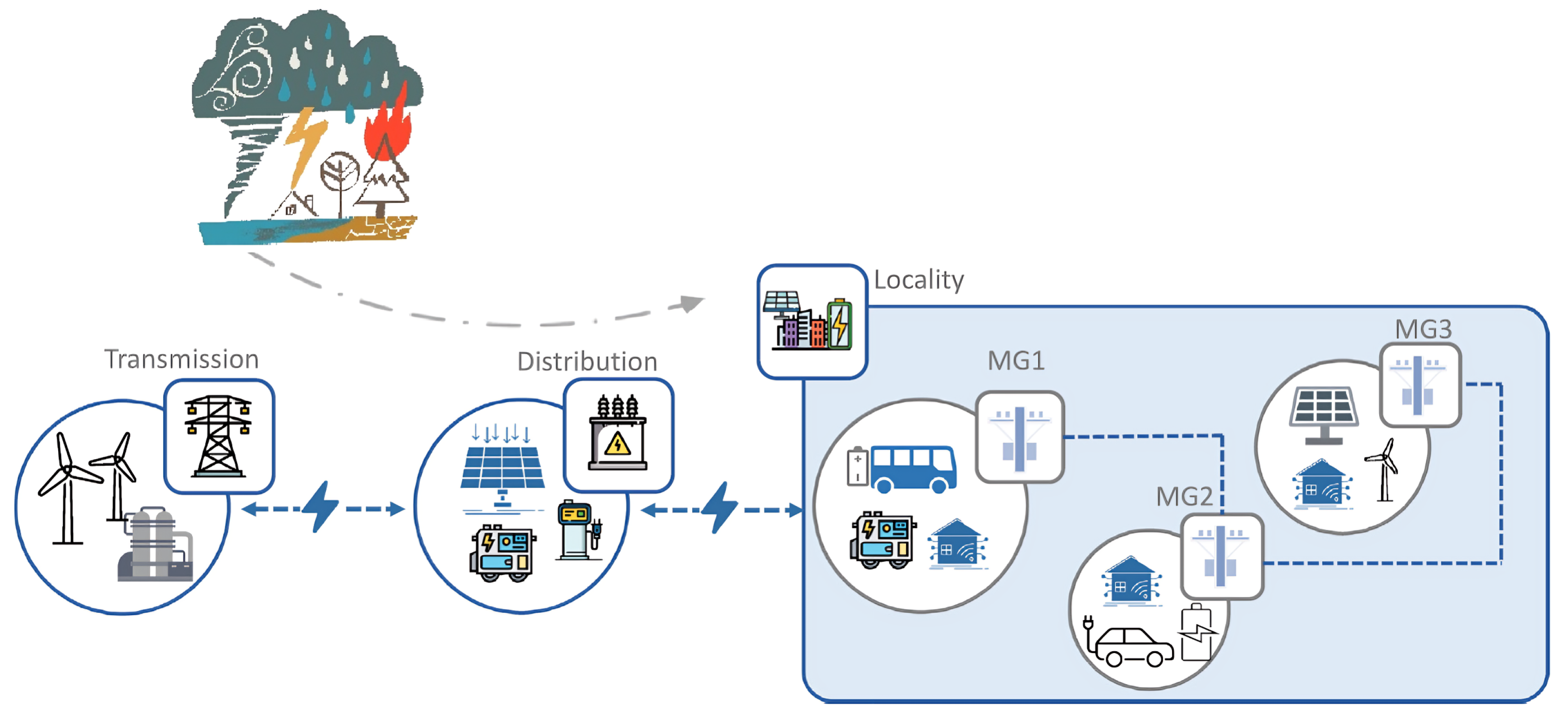
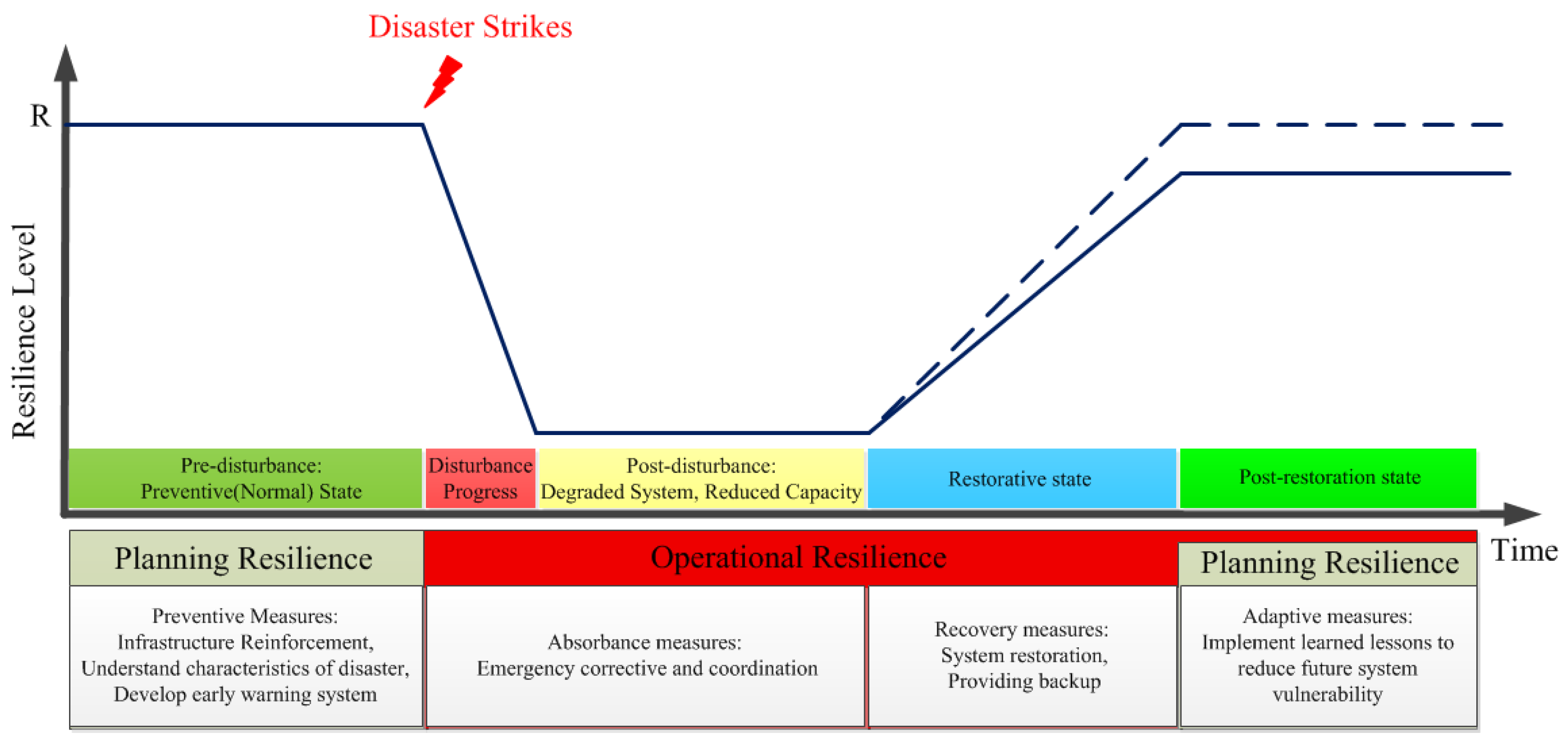
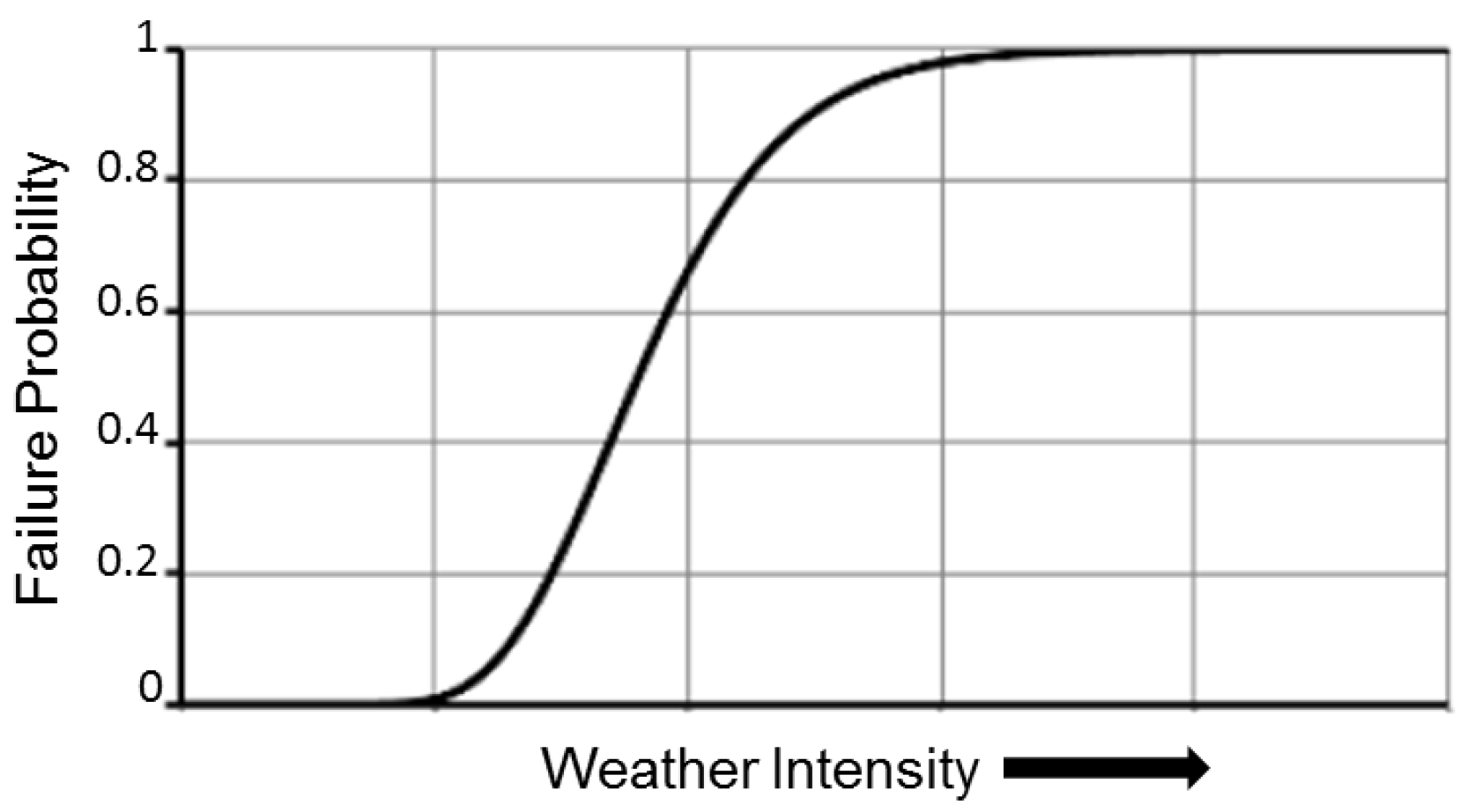

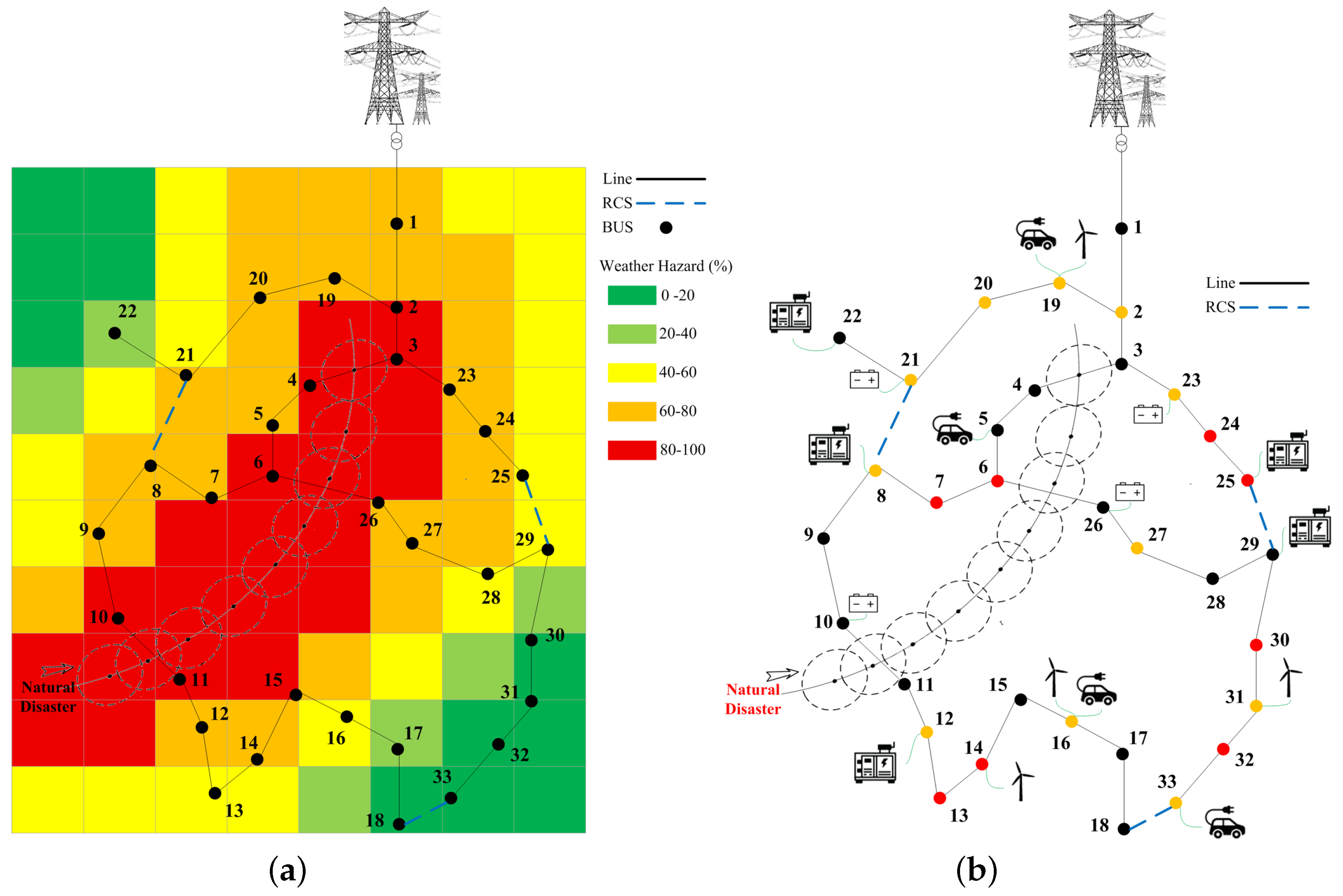

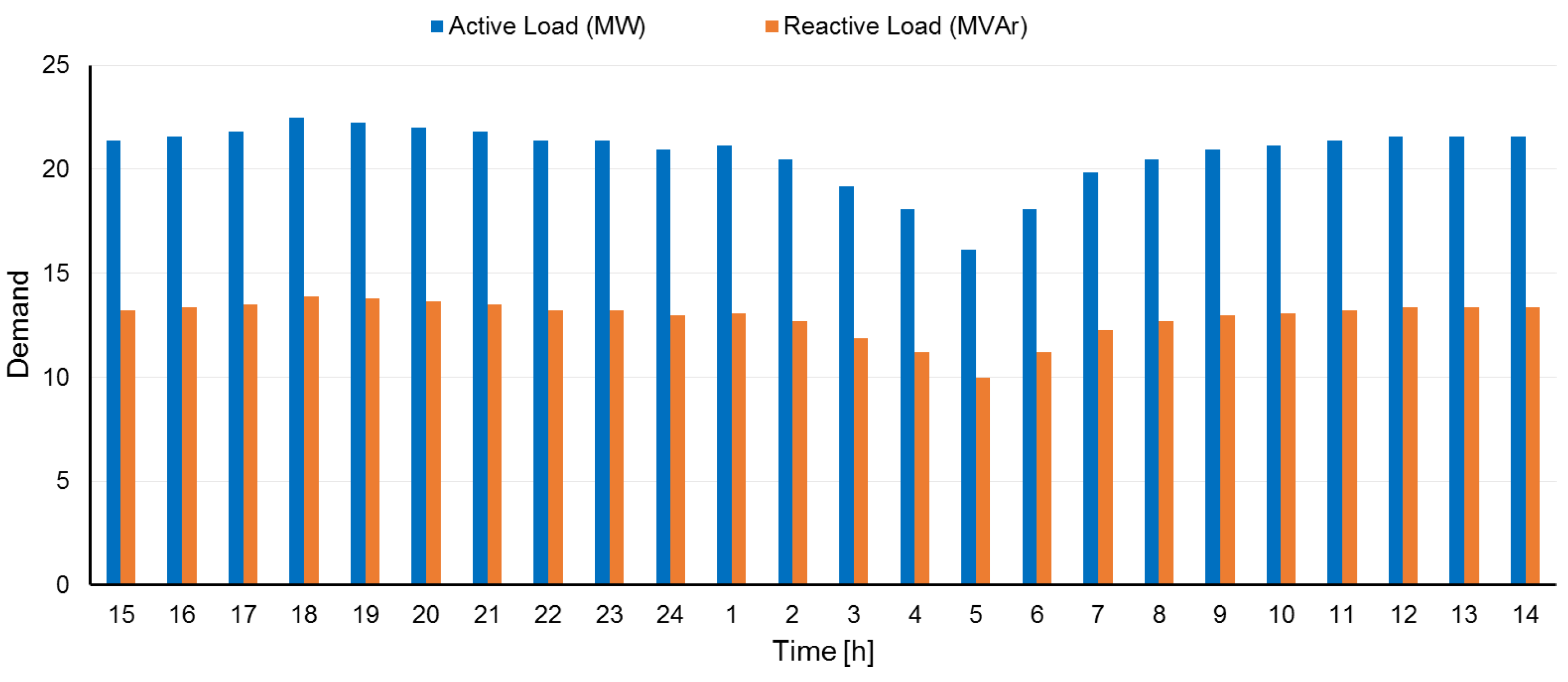
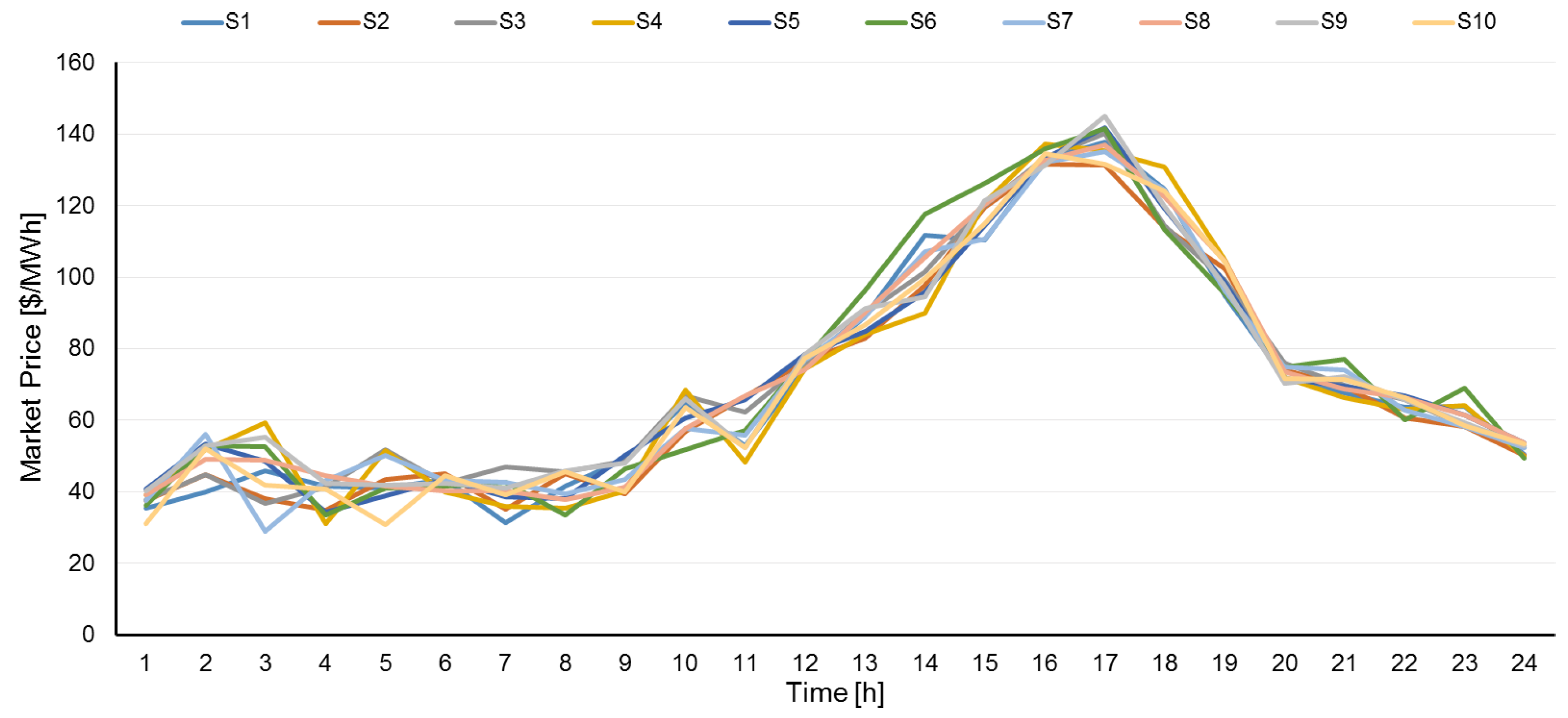
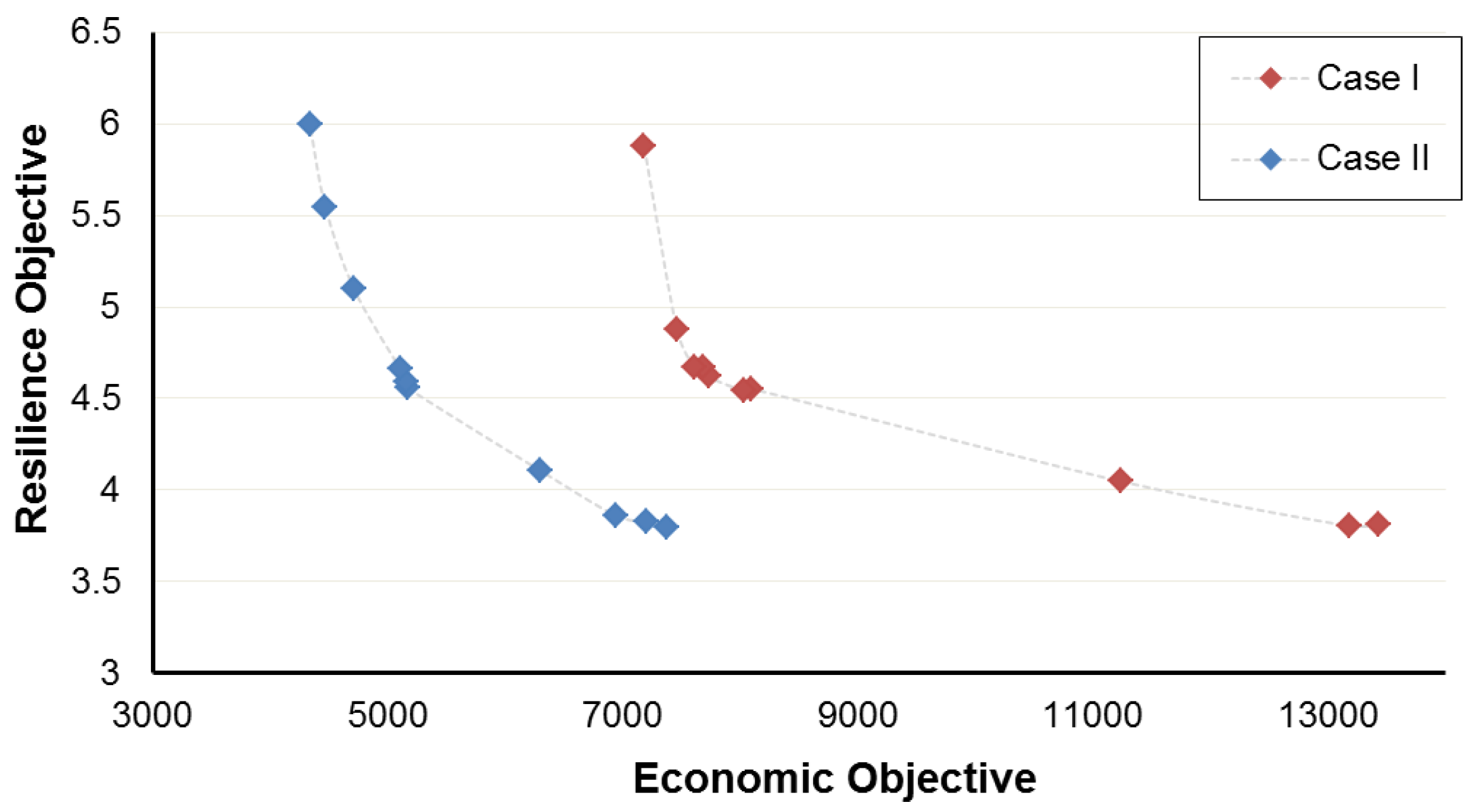
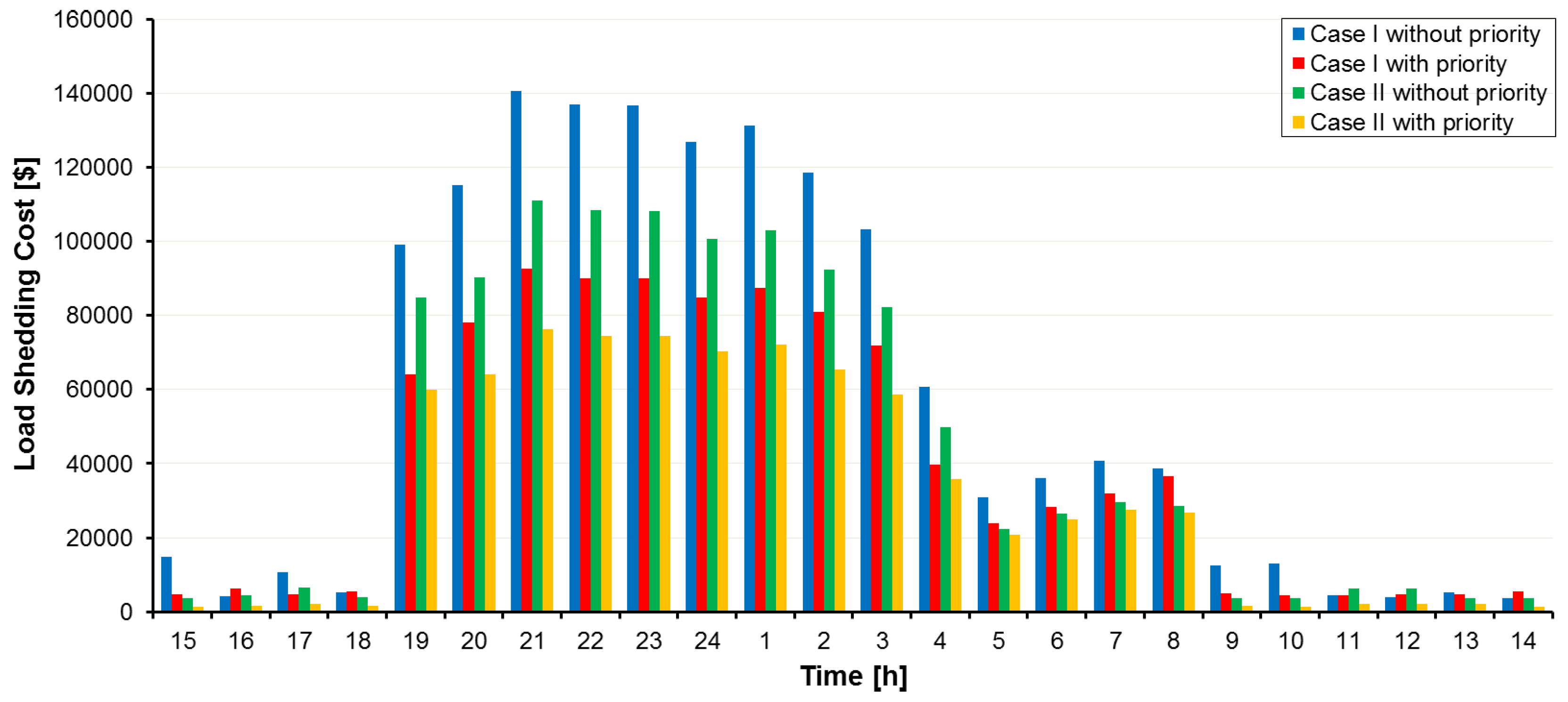
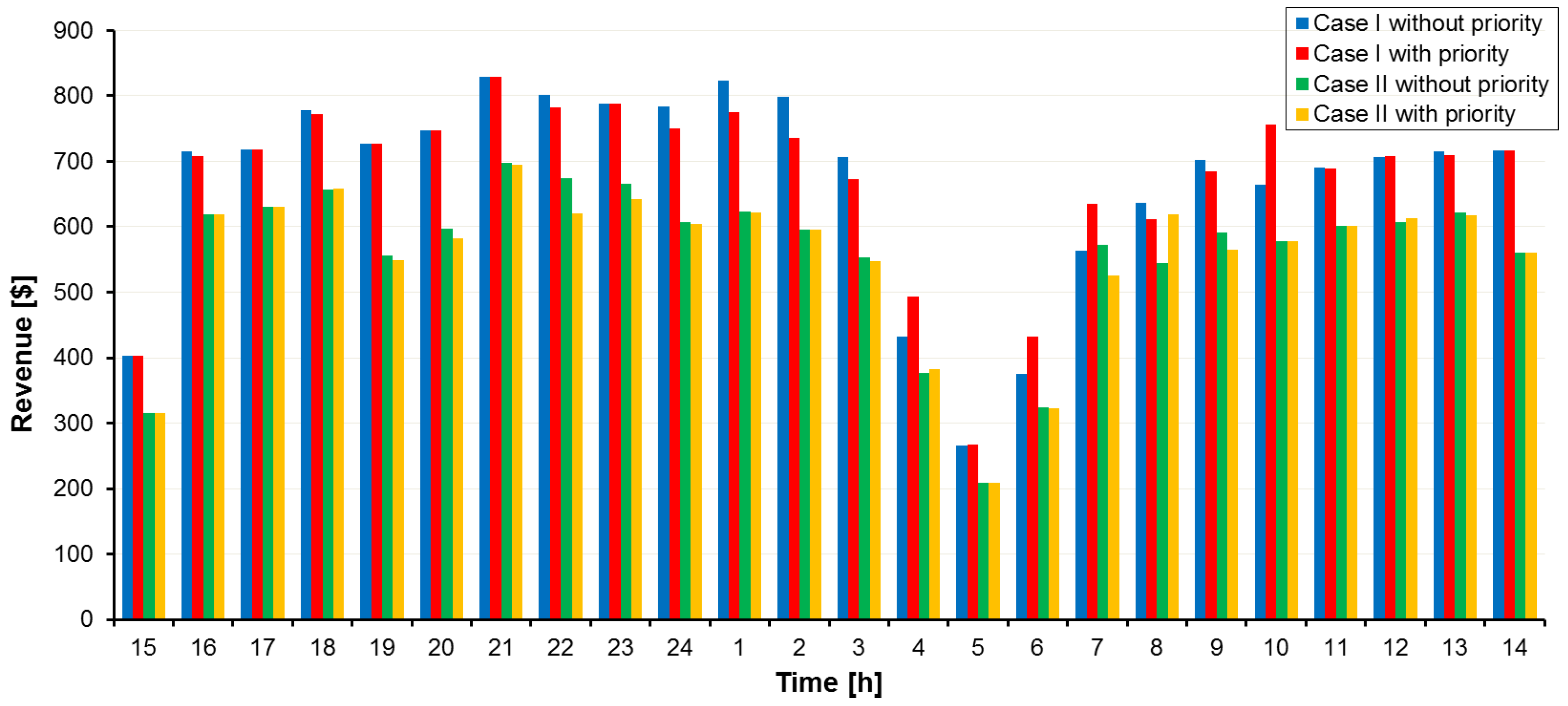



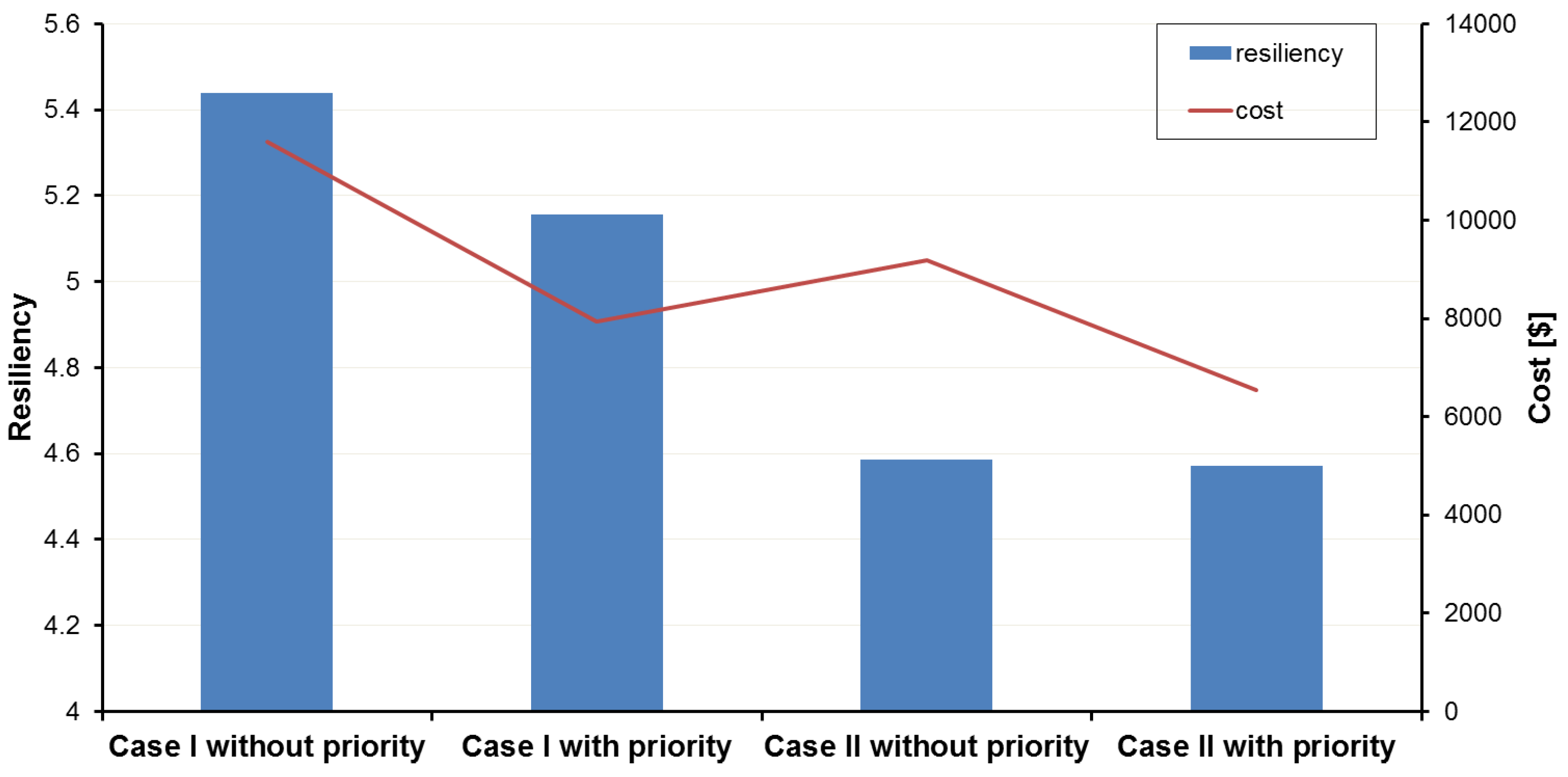
| Ref. | Formulation | Model | Power Flow | Operation Strategy | ||||
|---|---|---|---|---|---|---|---|---|
| EV | Microgrid Formation | Reconfiguration | Load Shift | Load Shedding | ||||
| [32] | MILP | Robust | DistFlow | - | * | * | - | * |
| [33] | MILP | Robust | AC-PF | - | * | - | - | * |
| [34] | MIQCP | Stochastic | AC-PF | - | * | * | - | * |
| [35] | MILP | Stochastic | DistFlow | - | - | * | - | - |
| [36] | MILP | Stochastic | Linearized DistFlow | * | - | - | - | * |
| [37] | MILP | Stochastic | AC-OPF | - | * | * | - | - |
| [38] | MILP | Robust | DistFlow | - | * | * | - | * |
| [39] | MILP | IGDT | DistFlow | - | - | * | - | * |
| [40] | MILP | Stochastic | AC-OPF | - | - | * | - | * |
| [41] | MILP | Stochastic | DistFlow | - | * | * | - | * |
| [42] | MILP | Stochastic | AC-OPF | - | * | * | - | * |
| [43] | MILP | Stochastic | DistFlow | - | * | - | - | * |
| [31] | MILP | Stochastic | DistFlow | - | * | - | - | - |
| [44] | MILNP | Stochastic | AC-PF | - | * | - | - | * |
| [45] | MILNP | Stochastic | AC-OPF | - | * | - | * | * |
| [46] | MILP | Robust | AC-PF | - | * | - | - | * |
| [47] | MILP | Stochastic | AC-PF | - | * | - | - | - |
| [29] | MILP | Stochastic | AC-PF | - | * | - | - | * |
| [48] | MILNP | Stochastic | AC-OPF | * | * | - | - | * |
| [49] | MILP | Stochastic | DistFlow | * | * | - | - | * |
| This work | MILP | Stochastic | Linearized AC-OPF | * | * | * | * | * |
| Case | DI | ( RI) | VD | ||
|---|---|---|---|---|---|
| Base | 1 | 1 | 1 | 1 | 0.1 |
| A | 1 | 2 | 1 | 1 | 0.1 |
| B | 1 | 1 | 1 | 2 | 0.1 |
| C | 0.5 | 1 | 2 | 1 | 0.1 |
| Unit | Technical Constraints | |||||
|---|---|---|---|---|---|---|
| Owner | ||||||
| DG1 | 3 | 0.21 | 2.1 | −2.1 | 90 | MG |
| DG2 | 2 | 0.19 | 1.9 | −1.9 | 90 | MG |
| DG3 | 2 | 0.19 | 1.9 | −1.9 | 90 | Other |
| DG4 | 3 | 0.22 | 2.2 | −2.2 | 90 | MG |
| DG5 | 3 | 0.22 | 2.2 | −2.2 | 90 | Other |
| Energy Storages | Parameters | ||||
|---|---|---|---|---|---|
| Owner | |||||
| Storage1 | 1.5 | 66.6 | 0.5 | 15 | MG |
| Storage2 | 1.5 | 80 | 0.5 | 15 | MG |
| Storage3 | 1.5 | 66.6 | 0.5 | 15 | other |
| Storage4 | 1.5 | 80 | 0.5 | 15 | other |
| Parking Lots | Parameters | ||||
|---|---|---|---|---|---|
| [%] | |||||
| EVP1 | 2 | 0.5 | 7 | 19 | 10 |
| EVP2 | 2 | 0.5 | 7 | 19 | 10 |
| EVP3 | 2 | 0.5 | 7 | 19 | 10 |
| EVP4 | 2 | 0.5 | 7 | 19 | 10 |
| Parameters | Probability Distribution Characteristics | ||||
|---|---|---|---|---|---|
| Mean | St. Dev. | Min | Max | ||
| TGD | 0.5 | 0.1 | 0.2 | 0.7 | |
| TGD | 19 | 2 | 16 | 24 | |
| TGD | 7 | 2 | 5 | 12 | |
| Parameters | Probability Distribution Characteristics | ||||
|---|---|---|---|---|---|
| Mean | St. Dev. | Min. | Max. | ||
| TGD | 20 | 1 | 17 | 23 | |
| TGD | 3 | 1 | 1 | 5 | |
| Threshold | Number of Damaged Lines |
|---|---|
| 3 | |
| 8 | |
| 15 |
| Level | Loads |
|---|---|
| First | |
| Second | |
| Third | Other loads |
| Cases | DI | RI | VD | LL | ℜ | Cost ($) |
|---|---|---|---|---|---|---|
| Case I without priority | 0.0962 | 0.5563 | 3.559 | 1.339 | 5.438 | 11,596 |
| Case I with priority | 0.0962 | 0.5448 | 3.152 | 1.453 | 5.157 | 7940.4 |
| Case lI without priority | 0.0774 | 0.6213 | 3.054 | 1.073 | 4.584 | 9181 |
| Case lI with priority | 0.0772 | 0.6232 | 3.017 | 1.099 | 4.571 | 6551.8 |
Disclaimer/Publisher’s Note: The statements, opinions and data contained in all publications are solely those of the individual author(s) and contributor(s) and not of MDPI and/or the editor(s). MDPI and/or the editor(s) disclaim responsibility for any injury to people or property resulting from any ideas, methods, instructions or products referred to in the content. |
© 2025 by the authors. Licensee MDPI, Basel, Switzerland. This article is an open access article distributed under the terms and conditions of the Creative Commons Attribution (CC BY) license (https://creativecommons.org/licenses/by/4.0/).
Share and Cite
Mehrabanifar, K.; Shayeghi, H.; Younesi, A.; Siano, P. Enhancing Modern Distribution System Resilience: A Comprehensive Two-Stage Approach for Mitigating Climate Change Impact. Smart Cities 2025, 8, 76. https://doi.org/10.3390/smartcities8030076
Mehrabanifar K, Shayeghi H, Younesi A, Siano P. Enhancing Modern Distribution System Resilience: A Comprehensive Two-Stage Approach for Mitigating Climate Change Impact. Smart Cities. 2025; 8(3):76. https://doi.org/10.3390/smartcities8030076
Chicago/Turabian StyleMehrabanifar, Kasra, Hossein Shayeghi, Abdollah Younesi, and Pierluigi Siano. 2025. "Enhancing Modern Distribution System Resilience: A Comprehensive Two-Stage Approach for Mitigating Climate Change Impact" Smart Cities 8, no. 3: 76. https://doi.org/10.3390/smartcities8030076
APA StyleMehrabanifar, K., Shayeghi, H., Younesi, A., & Siano, P. (2025). Enhancing Modern Distribution System Resilience: A Comprehensive Two-Stage Approach for Mitigating Climate Change Impact. Smart Cities, 8(3), 76. https://doi.org/10.3390/smartcities8030076








